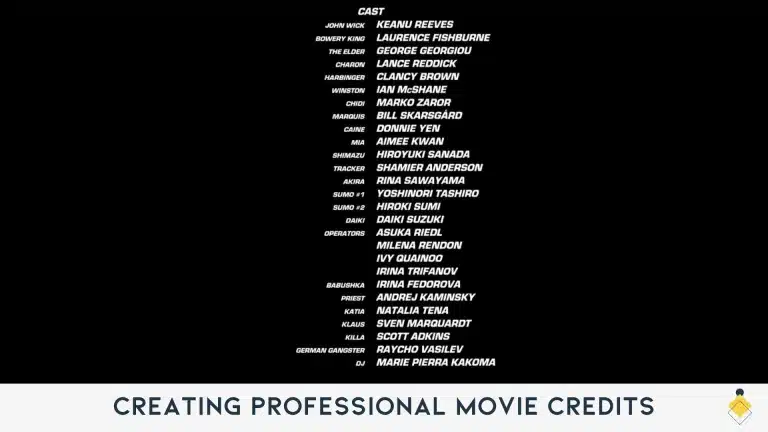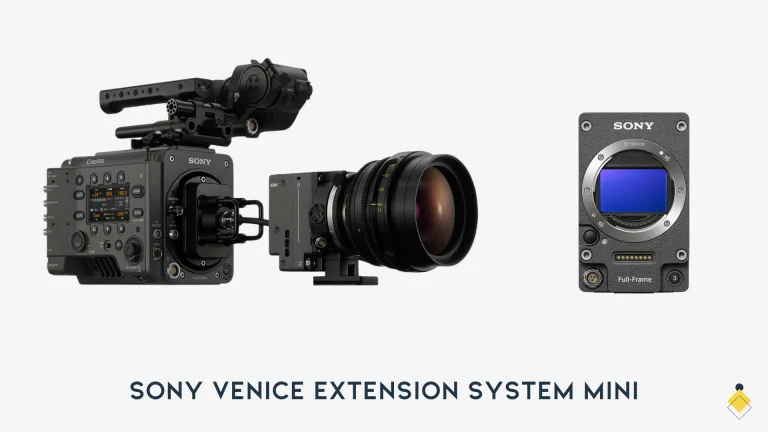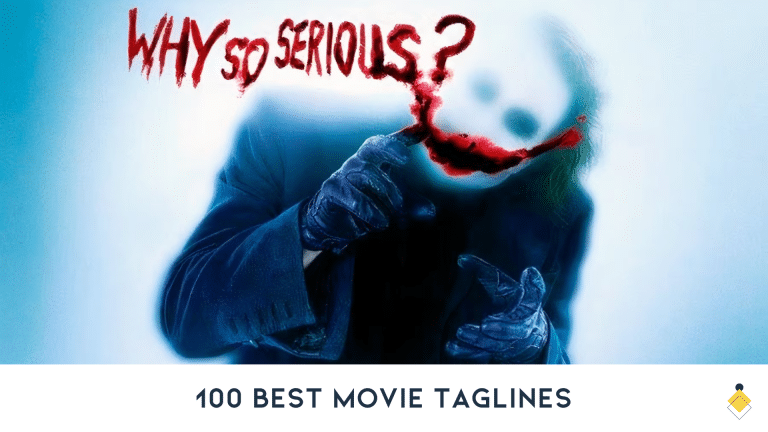As a long-time user of the Mamiya 645 Pro, I’m thrilled to share my in-depth review of this legendary medium format camera. Having shot with the Mamiya 645 Pro for over 5 years now, I’ve gotten to know this camera inside and out and experienced first-hand why it has achieved its iconic status. From its exceptional image quality to its handling and reliability, I’ll go through everything that makes the Mamiya 645 Pro such an exceptional photographic tool.
The first time I held the Mamiya 645 Pro, I was struck by its perfect balance and ergonomic design. Unlike other boxy medium format bodies, the 645 Pro felt naturally comfortable in my hands. After loading my first roll of 120 film and making some shots, I knew this was a special camera. The images had a three-dimensional pop that I hadn’t quite seen before – the magic of medium format. I was hooked!
Over the years and many, many rolls of film, the Mamiya 645 Pro has never let me down. It’s one of the few film cameras I still shoot regularly in the digital age. The sheer image quality keeps me coming back. In this review, I’ll try to convey why the Mamiya 645 Pro remains a legend, and an unforgettable photographic experience.
Unrivaled Image Quality from the 6×4.5 Negative
Without a doubt, the Mamiya 645 Pro’s biggest strength lies in its exceptional 6×4.5cm negatives. From my experience, the amount of detail, smooth tonality, and flexibility in the files is incredible. The larger negative simply records more information than 35mm film, giving images a medium format look that’s hard to replicate digitally. I’m always amazed reviewing 645 Pro scans at just how much resolution is there, even in small details. Landscapes are richly textured, while portraits have a lifelike dimensionality. The camera’s sharp Mamiya lenses only maximize what the film is capable of.
Having shot the 645 Pro extensively, I can confidently make 16×20 prints from the negatives that are tack sharp with smooth grain and tons of detail. Going bigger is certainly possible too. Having shot both 35mm and medium format for years, the difference is unmistakable for critical applications like portraits, products or landscapes. The added analog “data” of medium format creates files with subtler tonality that respond beautifully to editing.
Handling – Perfectly Balanced and Thoughtfully Designed
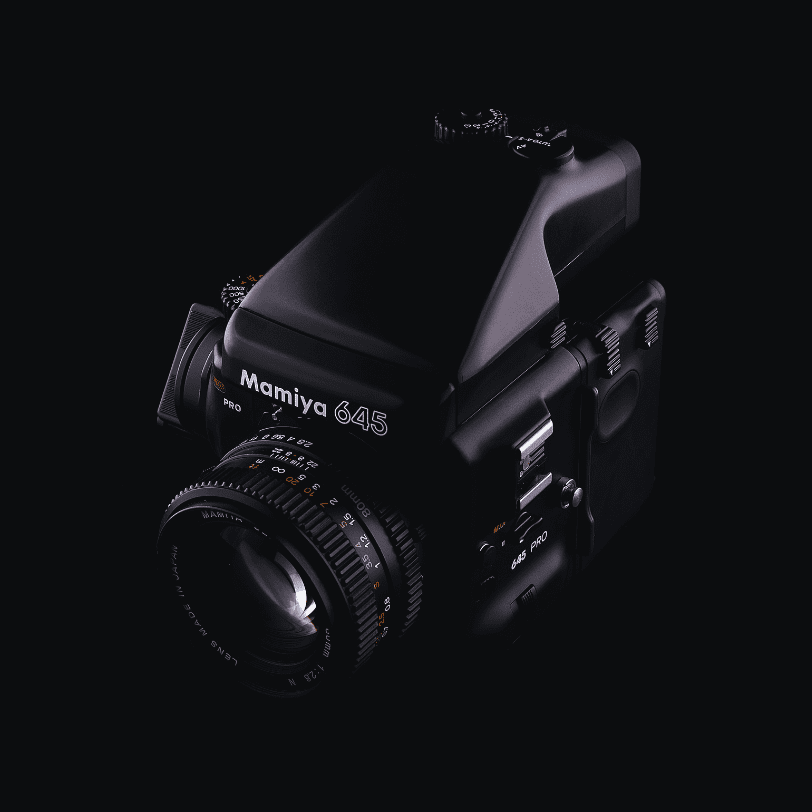
Despite the larger film size, the Mamiya 645 Pro remains a highly portable and ergonomic camera. From my experience, its designers succeeded in balancing portability with quality. The body weighs just 970g which is only moderately heavier than most 35mm SLRs. Yet the built-in grip is perfectly contoured to fit comfortably in the hand. All controls are intuitively placed for efficient shooting. Dual shutter releases mean easy access in horizontal or vertical orientations.
After years of use, some of my favorite aspects of the Mamiya 645 Pro’s handling include:
- Large bright viewfinder makes composition easy
- Buttery smooth focus ring on Mamiya lenses
- Big shutter speed and aperture dials are easy to set
- Exposure compensation dial makes quick adjustments easy
- Reliable metal focal plane shutter up to 1/1000s
- Camera balances beautifully with any Mamiya 645 lens
The Mamiya 645 Pro just oozes quality in a refined, mechanical way. From the dampened film advance to the precise click of the shutter, every aspect of it engineered for peak performance. It’s a pleasure to photograph with and encourages a methodical, intentional shooting style.
Reliability – Built Like A Tank for Decades of Use
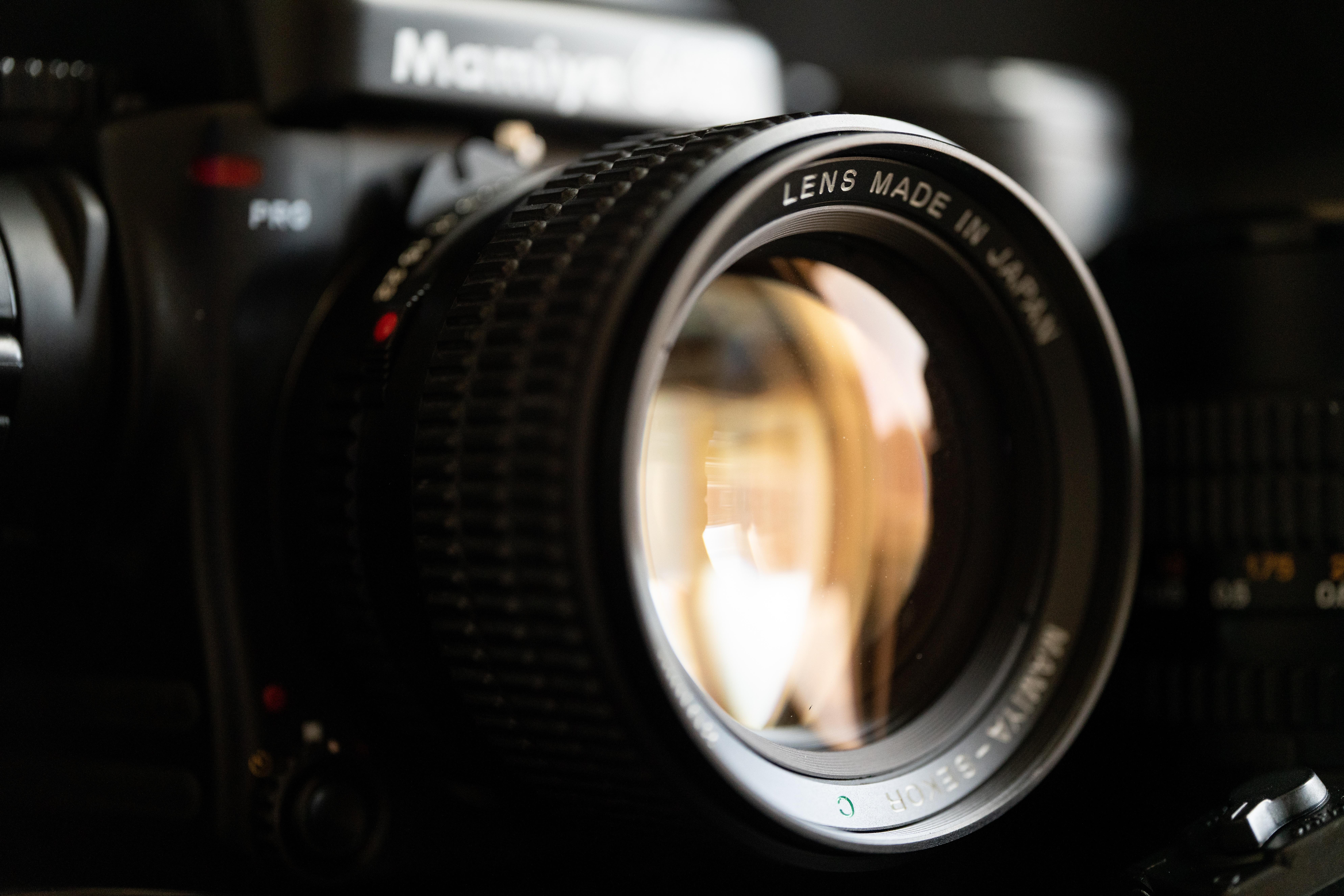
Despite being a complex mechanical device, the Mamiya 645 Pro has proven to be exceptionally reliable in my experience. The professional metal construction is made to withstand heavy daily use in the field. After 5+ years as my main film camera, my Mamiya 645 Pro has never had a single mechanical issue. The smooth dampened feel of the film advance tells you the intricate mechanics are precisely engineered. I’ve put hundreds of rolls through my 645 Pro at this point in all kinds of conditions and it just keeps performing flawlessly every time.
Beyond the robust build, the modular Mamiya 645 system extends the camera’s usefulness decades into the future. You can replace focusing screens, lens elements, film backs, mirrors etc. if any damage occurs. This modularity means the camera can stay in service pretty much indefinitely. Many 645 Pro’s have been in active use for over 40-50 years at this point and still run perfectly. It’s a testament to Mamiya’s outstanding build philosophy.
For professional photographers who depended on this camera for their business, that reliability was absolutely essential day to day. Having shot with a Mamiya 645 Pro extensively myself, I have complete confidence in its durability and can understand why many pros considered it an indispensable tool.
Lens Selection – Impressive Optics Built Specifically for 645

A major advantage of the Mamiya 645 system is the wide range of native Mamiya Sekor lenses designed for the 6×4.5cm format. These lenses take full advantage of the large negative and deliver amazing sharpness, smooth bokeh and medium format character. Mamiya offered an extensive arsenal of lenses from ultra-wides to telephotos.
After trying numerous Mamiya lenses over the years, some favorites that I find myself using most include:
- 80mm f/1.9 – Beautiful, soft portraits wide open
- 55mm f/2.8 – Compact normal lens, excellent for walking around
- 150mm f/2.8 – My go-to portrait lens for headshots
- 50-100mm f/3.5 zoom – Extremely versatile for travel and events
- 150-300mm f/5.6 – Let’s me isolate subjects from a distance
What I appreciate is each lens delivers stellar results across the frame when stopped down, capturing the full potential of the 645 film. The all-metal construction is also built to last like the camera body itself. In terms of optical performance for the size, Mamiya 645 lenses are extraordinarily refined.
Some Special Features Add Functionality
Beyond the basics, the Mamiya 645 Pro contains some clever features that have come in handy for my shooting purposes over the years. A few worth highlighting are:
- Interchangeable Film Backs – Being able to quickly swap 120 and 220 film is convenient when alternating between B&W and color.
- Multiple Exposure Mode – Opens up creative possibilities like overlapped frames and in-camera composites.
- Extensive System Accessories – From macro bellows to teleconverters, there are many add-ons for niche uses.
- Interchangeable Focusing Screens – I prefer the dual microprism screen for easy focusing with shallow DOF lenses.
- Mamiya Universal Bellows – Unlocks large format camera movements like tilt/shift for unique focusing effects.
These give the system versatility that has kept the Mamiya 645 Pro adaptable decade after decade as technology progressed and my own needs changed over the years.
Image Samples from My Personal 645 Pro
Here are a just a few personal images I’ve made over the years with my dependable Mamiya 645 Pro and some of the gorgeous Mamiya lenses in the system:
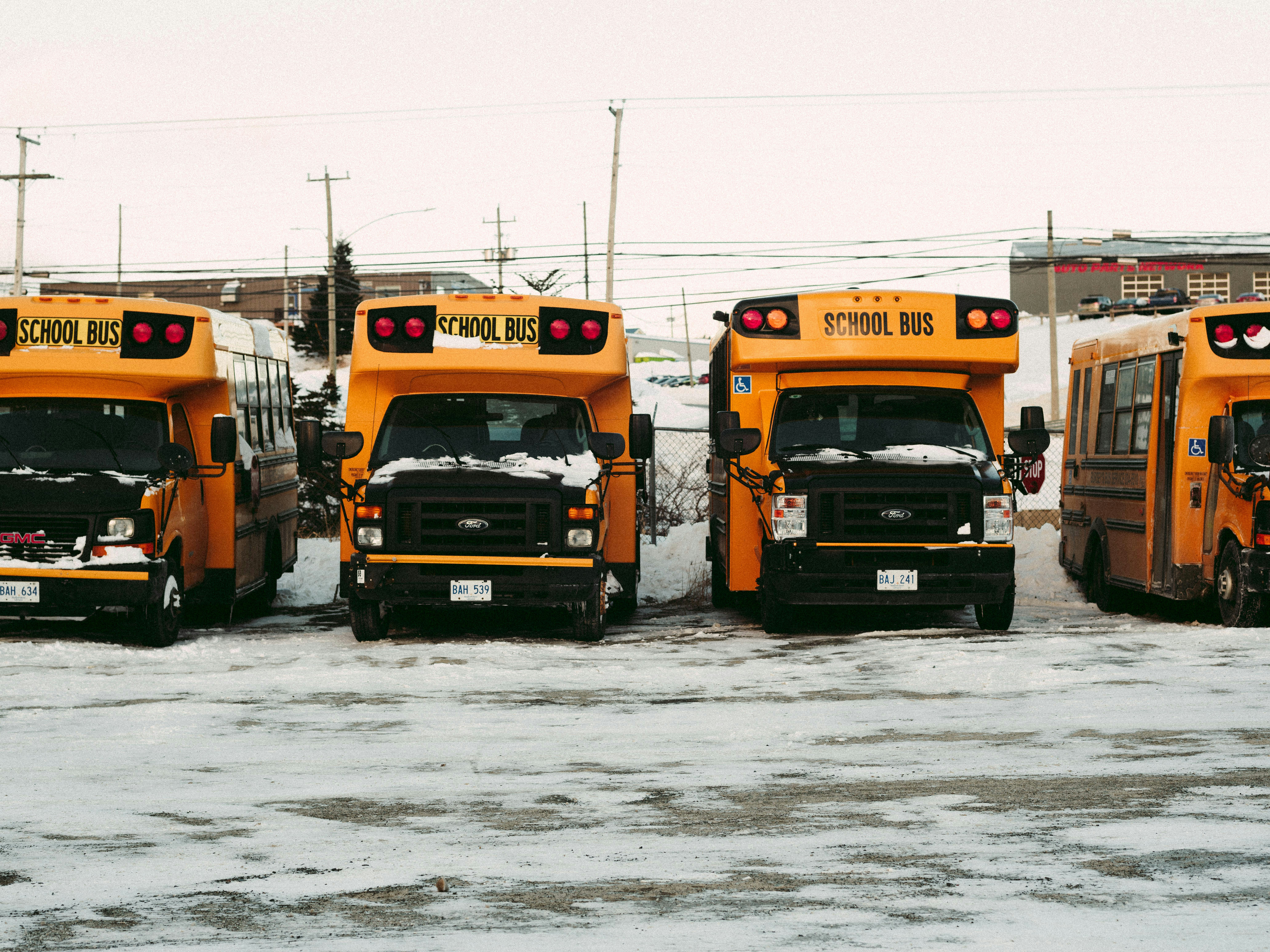

The Unmistakable Look of Medium Format
After shooting the Mamiya 645 Pro for many years alongside 35mm cameras, the difference between the two formats is striking. The 6×4.5cm negatives showcase smoother grain, wider tonal range, and finer, more dimensional details than even the best 35mm film. The look is difficult to describe, but the images have more depth and “smoothness” to them.
Even when printed at normal sizes like 8×10, the 645 files have a lifelike clarity that simply contains more usable information. When printing bigger or cropping in, the advantage becomes even clearer. The camera’s big, bright viewfinder also makes careful composition easier. For me, the Mamiya 645 Pro still delivers an absolutely magical shooting experience that keeps me coming back.
Pros and Cons Based on My Experience
No camera is perfect, and the Mamiya 645 Pro is no exception. Here are some pros and cons I’ve found in my extensive time shooting with it:
Pros:
- Superb image quality and resolution from the 6×4.5cm negatives
- Extremely reliable and durable professional build quality
- Intuitive handling with great ergonomics for a medium format camera
- Compatible with a wide range of excellent Mamiya Sekor lenses
- Versatile and customizable system suitable for diverse needs
- Compact and lighter weight than most medium format equipment
Cons:
- Lack of automation means manual focus and exposure only
- Higher cost of 120 and 220 film compared to 35mm
- Increased weight over 35mm cameras not quite pocketable
- Lenses and accessories can get quite expensive too
- Not quite as fast and streamlined a shooter as modern SLRs
The Timeless Allure of Mamiya 645 Pro
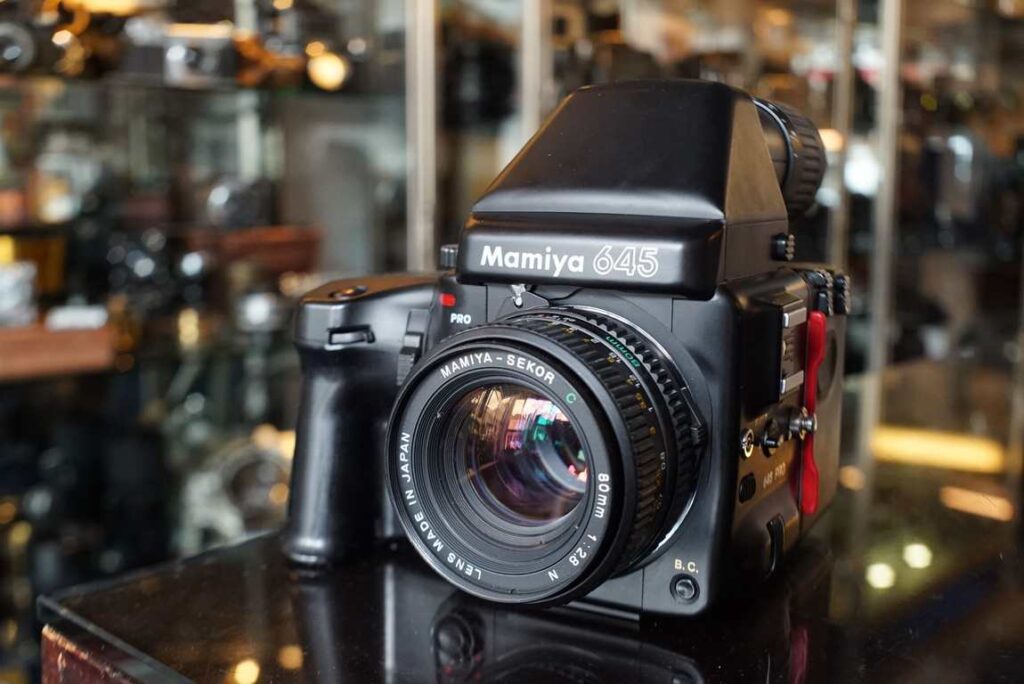
Even after years of technological progress, the Mamiya 645 Pro’s pure mechanical shooting experience remains incredibly rewarding. For those seeking the highest fidelity from film, and the distinctive rendering of medium format, the Mamiya 645 Pro absolutely delivers. Sure, it may cost more and require some patience sourcing film and accessories today. But every frame through the 645 Pro feels like a special experience that connects you back to the art of photography itself.
If you have a chance to buy a Mamiya 645 Pro in good condition, I couldn’t recommend it enough. It’s a camera that will provide a lifetime of photographic enjoyment while teaching you invaluable skills. Simply put, images from the Mamiya 645 Pro represent the pinnacle of medium format film quality, and it remains a legend for very good reason.
FAQ – Mamiya 645 Pro
The Mamiya 645 Pro is a medium format film camera that offers exceptional image quality and versatility. It is a part of the Mamiya 645 camera system and is known for its robust build and advanced features.
No, the Mamiya 645 Pro is a medium format film camera and does not have digital capabilities. However, it can produce high-resolution images on medium format film.
The 645 format refers to the film size used in cameras like the Mamiya 645 Pro. It is larger than 35mm film format, providing higher image quality and better detail.
The Mamiya 645 Pro offers features like the AE prism finder, leaf shutter, aperture priority mode, and the ability to use a waist-level finder, making it a versatile and adaptable medium format camera.
Yes, the Mamiya 645 Pro is compatible with a range of lenses, offering photographers the flexibility to choose the focal length and aperture that best suits their photography needs.
The Mamiya 645 Pro offers a balance of excellent image quality, functionality, and a wide range of compatible accessories, making it a popular choice for medium format photography enthusiasts.
The Mamiya 645 Pro weights 1.8kg (approximately 4 pounds).
Yes, many professional photographers have used and continue to use the Mamiya 645 Pro for its excellent image quality, robust build, and the range of accessories available for the camera system.
To get the best results with the Mamiya 645 Pro, it’s important to carefully handle the camera to minimize camera shake, choose appropriate film speed and exposure settings, and consider the depth of field for each shot.
The Mamiya 645 Pro is available from various sources including camera specialty stores, online marketplaces like eBay, and through second-hand retailers who deal with classic and vintage cameras.



